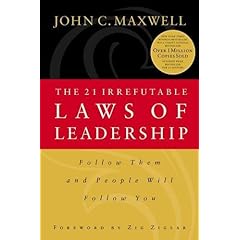Photo Courtesy of FreeFoto.com
First of all, I am a Coffee Lover! I cannot live without coffee.
Recently, I began to notice that I was visiting Starbucks more often than its competitors . In fact , it is like 10 times to 1. ( Coffee Bean, Gloria Jean, San Francisco) . Honestly speaking, I prefer San Francisco's and Coffee Bean's coffee more than Starbuck. But why am I choosing to go to Starbucks - the answer is, it is the most convenient. Just less than 3 km from my house, there is a Starbucks. Everywhere I go, every shopping malls I visit, I see Starbucks. It is like San Francisco , Coffee Bean and Gloria Jean is fading...into unknown. Some more , just noticed that 2 of the Gloria Jean's shop has been closed down. San Francisco seems never have any new stores .
Anyway, I love to go to Starbucks to do my work or even blogging. It kinda has a culture that welcome you to go there and do your work with your notebook, sits there for hours (my record is up to 5 hours). It also provides you with extension cable in case the cable point is not enough. At one Starbucks, I saw all the overlapped cables on the floor. Pretty Messy sight! But , hey, nobody seems to mind.
And there is a new bestsellers book on Starbuck!!! (see below). Haven't read this but hope can read someday (when I finish all the books that I have bought for past 1 month. A little bit slow in reading nowadays due to the hectic schedule.)

Next, come to the latest Starbucks gossip about the the email of the Chairman that leaked out for all to see.
Starbucks chairman warns of "the commoditization of the Starbucks experience"
Starbucks chairman Howard Schultz wrote this to CEO Jim Donald earlier in Feb. The memo's authenticity has been confirmed by Starbucks.
Below is the email.
From: Howard SchultzSent: Wednesday, February 14, 2007 10:39 AM Pacific Standard TimeTo: Jim DonaldCc: Anne Saunders; Dave Pace; Dorothy Kim; Gerry Lopez; Jim Alling; Ken Lombard; Martin Coles; Michael Casey; Michelle Gass; Paula Boggs; Sandra Taylor
Subject: The Commoditization of the Starbucks Experience
As you prepare for the FY 08 strategic planning process, I want to share some of my thoughts with you.
Over the past ten years, in order to achieve the growth, development, and scale necessary to go from less than 1,000 stores to 13,000 stores and beyond, we have had to make a series of decisions that, in retrospect, have lead to the watering down of the Starbucks experience, and, what some might call the commoditization of our brand.
Many of these decisions were probably right at the time, and on their own merit would not have created the dilution of the experience; but in this case, the sum is much greater and, unfortunately, much more damaging than the individual pieces. For example, when we went to automatic espresso machines, we solved a major problem in terms of speed of service and efficiency. At the same time, we overlooked the fact that we would remove much of the romance and theatre that was in play with the use of the La Marzocca machines. This specific decision became even more damaging when the height of the machines, which are now in thousands of stores, blocked the visual sight line the customer previously had to watch the drink being made, and for the intimate experience with the barista. This, coupled with the need for fresh roasted coffee in every North America city and every international market, moved us toward the decision and the need for flavor locked packaging. Again, the right decision at the right time, and once again I believe we overlooked the cause and the affect of flavor lock in our stores. We achieved fresh roasted bagged coffee, but at what cost? The loss of aroma -- perhaps the most powerful non-verbal signal we had in our stores; the loss of our people scooping fresh coffee from the bins and grinding it fresh in front of the customer, and once again stripping the store of tradition and our heritage? Then we moved to store design. Clearly we have had to streamline store design to gain efficiencies of scale and to make sure we had the ROI on sales to investment ratios that would satisfy the financial side of our business. However, one of the results has been stores that no longer have the soul of the past and reflect a chain of stores vs. the warm feeling of a neighborhood store. Some people even call our stores sterile, cookie cutter, no longer reflecting the passion our partners feel about our coffee. In fact, I am not sure people today even know we are roasting coffee. You certainly can't get the message from being in our stores. The merchandise, more art than science, is far removed from being the merchant that I believe we can be and certainly at a minimum should support the foundation of our coffee heritage. Some stores don't have coffee grinders, French presses from Bodum, or even coffee filters.
Now that I have provided you with a list of some of the underlying issues that I believe we need to solve, let me say at the outset that we have all been part of these decisions. I take full responsibility myself, but we desperately need to look into the mirror and realize it's time to get back to the core and make the changes necessary to evoke the heritage, the tradition, and the passion that we all have for the true Starbucks experience. While the current state of affairs for the most part is self induced, that has lead to competitors of all kinds, small and large coffee companies, fast food operators, and mom and pops, to position themselves in a way that creates awareness, trial and loyalty of people who previously have been Starbucks customers. This must be eradicated.
I have said for 20 years that our success is not an entitlement and now it's proving to be a reality. Let's be smarter about how we are spending our time, money and resources. Let's get back to the core. Push for innovation and do the things necessary to once again differentiate Starbucks from all others. We source and buy the highest quality coffee. We have built the most trusted brand in coffee in the world, and we have an enormous responsibility to both the people who have come before us and the 150,000 partners and their families who are relying on our stewardship.
Finally, I would like to acknowledge all that you do for Starbucks. Without your passion and commitment, we would not be where we are today.
Onward…
 I had a new inspiration for building the team, thanks to the book "First, Break All the Rules: What the World's Greatest Managers Do Differently".
I had a new inspiration for building the team, thanks to the book "First, Break All the Rules: What the World's Greatest Managers Do Differently".












